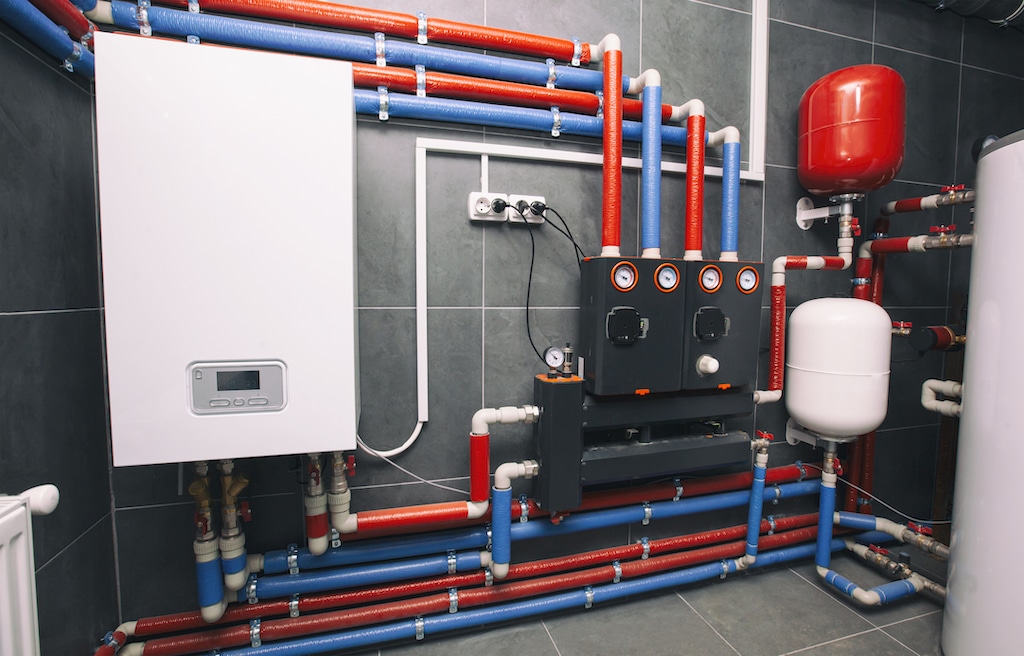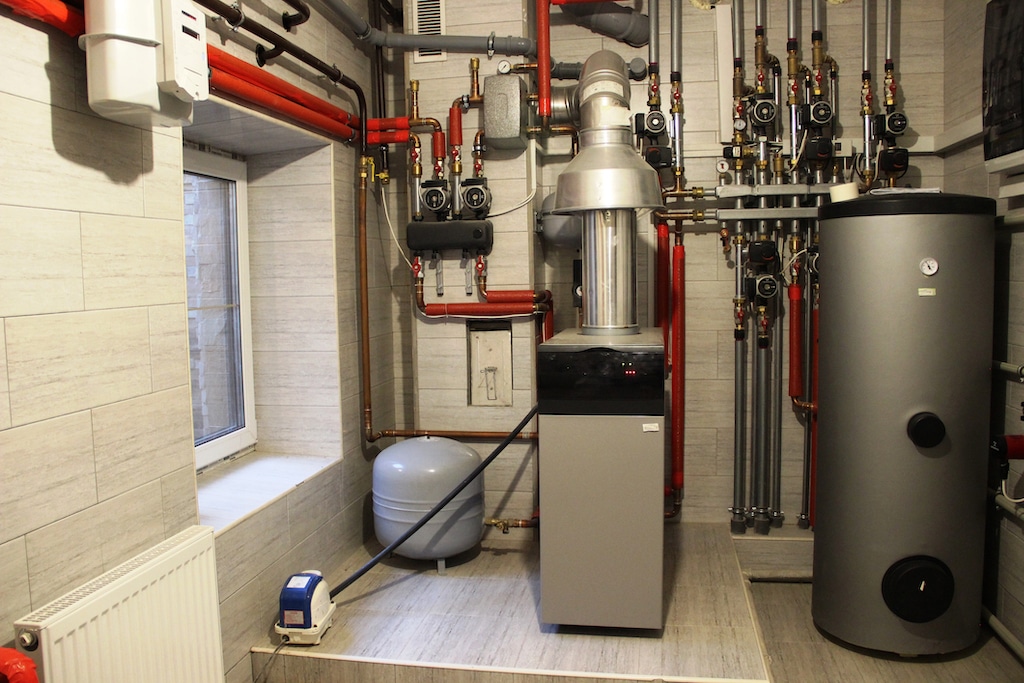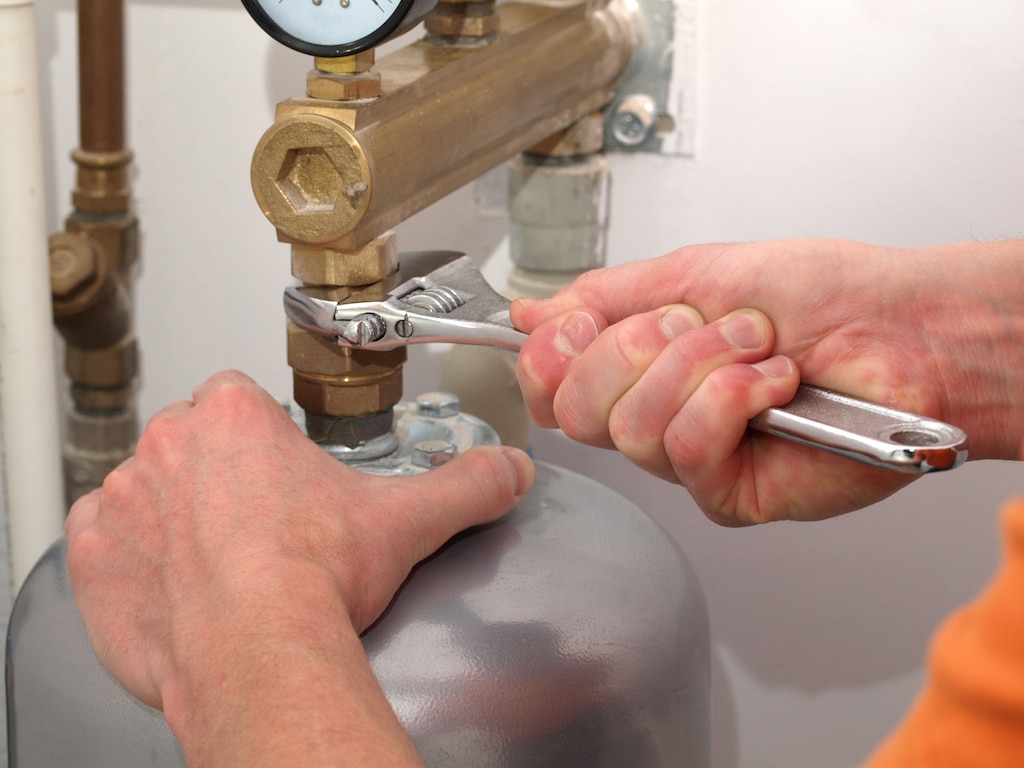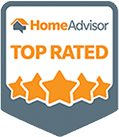
Essential Guide to Expansion Tanks for Water Heaters
Have you ever wondered why your water heater needs an expansion tank?
If you’re a homeowner, understanding the components of your water heating system is crucial for maintaining a safe and efficient home.
Expansion tanks for water heaters play a vital role in this system, but its importance is often overlooked until problems arise.
In bold: In this article, we will explore what expansion tanks for water heaters are, why it’s necessary, and how it contributes to the overall health of your plumbing system.
In this article, you’ll learn about the function of an expansion tank, how to determine if your water heater needs one, and the benefits of installing it correctly.
We’ll also guide you through choosing the right expansion tank for your home and provide tips for maintenance. Whether you’re dealing with plumbing issues or just looking to upgrade your home’s efficiency, this guide has got you covered.
Also read: Quick Plumbing Repair Fixes: Your Diy Guide
A Detailed Explanation of Expansion Tanks for Water Heaters
Expansion tanks for water heaters are critical components in your home’s plumbing system. They are designed to absorb excess water pressure caused by the heating process, preventing damage to your water heater and plumbing fixtures.
Why Your Water Heater Needs an Expansion Tank
The Science of Water Expansion
When water is heated in your water heater, it undergoes a physical change that increases its volume.
This phenomenon, known as thermal expansion, occurs because water molecules move faster and spread out as they heat up. In a confined space such as a water heater tank, this expansion creates increased pressure.
If not properly managed, this pressure can strain your plumbing system, leading to potential leaks, damage to the water heater itself, and even burst pipes in extreme cases.
Expansion tanks for water heaters act as a safety net for this excess pressure. By providing a designated space where expanded water can flow, it effectively reduces the pressure within the tank and the overall plumbing system.
This not only protects the integrity of your plumbing but also extends the lifespan of your water heater by preventing overwork and damage due to high pressure.
The Role of Expansion Tanks in Maintaining Pressure Balance
The primary function of an expansion tank on a water heater is to maintain a balanced pressure in your home’s water system.
As water heats and expands, expansion tanks for water heaters absorb the excess, preventing the water pressure from reaching dangerous levels. This is crucial in closed water systems, where backflow preventers or check valves stop the expanded water from flowing back into the municipal water supply.
Without an expansion tank, the increased pressure has nowhere to go but through your fixtures and appliances, which can lead to drips and leaks, and in severe cases, significant water damage.
The cushioning effect of the expansion tank ensures that pressure within the system remains within a safe range, safeguarding against unexpected plumbing repairs and extending the life of your water heater.
Preventing Damage and Enhancing Safety
The installation of expansion tanks for water heaters directly impacts the safety and durability of your water heating system.
By mitigating the risk of excessive pressure, the expansion tank prevents the water heater’s tank from becoming overpressurized.
This is particularly important for preventing the tank from leaking or, in worst-case scenarios, exploding, which could cause considerable damage to your property and pose serious safety risks to occupants.
Moreover, the expansion tank for your water heater plays a critical role in compliance with building codes and insurance policies.
Many local regulations now require the installation of an expansion tank in new homes or during significant plumbing renovations. This compliance not only ensures the safety of the household but also protects homeowners from potential legal and insurance complications arising from water damage related to pressure issues.
Long-Term Benefits and Cost Savings
Investing in expansion tanks for water heaters bring significant long-term benefits, including cost savings.
By preventing pressure-related damage, homeowners save on potential repair costs for leaks, damaged pipes, and water heater replacements.
Additionally, the efficiency of your water heating system is maintained, reducing energy consumption and lowering utility bills.
Expansion tanks for water heaters extend beyond immediate pressure relief; they contribute to the overall health of your plumbing system.
Reduced wear and tear on pipes and fixtures mean fewer leaks, less drip, and a lower likelihood of catastrophic plumbing failures. This proactive approach to plumbing maintenance can result in substantial savings over time, making the expansion tank a wise investment for any homeowner.

Photo By Yliya Zhuravleva at iStock
How Expansion Tanks For Water Heaters Work
The Dual-Chamber Design
At the heart of expansion tanks for water heaters lies its dual-chamber design, separated by a rubber diaphragm. This design is crucial for the tank’s operation and its ability to manage the pressures within your home’s water heating system.
On one side of the diaphragm is the water chamber, which is directly connected to your home’s plumbing system. This is where the expanded water enters the tank. The other side of the diaphragm is the air chamber, which is pre-charged with air at a specific pressure setting during manufacturing.
This separation allows the expansion tank to respond dynamically to changes in water volume and pressure.
As the water heater operates and water temperature rises, the volume of water expands. This expansion increases the pressure within the plumbing system.
The expanded water flows into the tank’s water chamber, pushing against the diaphragm and compressing the air in the air chamber. This action absorbs the excess pressure, preventing it from stressing the plumbing system and the water heater.
Pressure Absorption and Release Mechanism
Expansion tanks for water heaters function through a pressure absorption and release mechanism.
The pre-charged air side of the tank is set to match or slightly exceed the normal water pressure in your home’s plumbing system.
When thermal expansion occurs, and water pressure rises, the expanded water moves into the tank and compresses the air in the air chamber.
The diaphragm flexes in response to the increased water volume, absorbing the excess pressure and preventing it from reaching dangerous levels within the system.
As water cools and contracts, the pressure on the diaphragm decreases, allowing the compressed air to push back and return the water to the plumbing system.
This process maintains a balanced pressure within the system, ensuring that it neither becomes too high, which could lead to damage, nor too low, which could affect water flow and heater efficiency. The expansion tanks for water heaters‘ ability to absorb and release pressure protects the water heater and plumbing from the potential damage caused by thermal expansion.
The Role of the Pre-Charged Air Chamber
The pre-charged air chamber in Expansion tanks for water heaters plays a critical role in the tank’s functionality.
The air pressure within this chamber is carefully calibrated to balance the water pressure in the plumbing system when the water heater is not heating water. This pre-charge pressure is essential for the expansion tank to function correctly from the moment it’s installed.
The air pressure acts as a counterbalance to the water pressure, ensuring that the diaphragm can move freely in response to changes in water volume. This flexibility is what allows the expansion tanks for water heaters to absorb excess pressure effectively.
Without the correct air pressure, the tank would not be able to accommodate the expanded water, rendering it ineffective at protecting the plumbing system from increased pressure levels.
Maintenance and Monitoring
While expansion tanks for water heaters are designed to operate efficiently with minimal maintenance, periodic checks are essential to ensure its continued functionality.
Over time, the air charge in expansion tanks for water heaters can diminish, affecting its ability to absorb excess pressure.
Homeowners should periodically check the air pressure in the tank, adjusting it as necessary to match the system’s water pressure.
Additionally, the integrity of the diaphragm should be monitored. A ruptured or leaking diaphragm can compromise the tank’s ability to separate the water and air chambers, leading to system failure.
Regular maintenance checks, including inspecting for signs of wear, corrosion, or damage, can help extend the life of the expansion tank and ensure it continues to protect your home’s plumbing system effectively.
Also read: Revolutionize Your Home: Tankless Water Heaters – A Comprehensive Guide
How to Choose the Right Expansion Tanks For Water Heaters
Understanding Capacity Requirements
When it comes to ensuring the effectiveness of Expansion tanks for water heaters, one of the first considerations is the tank’s capacity. The capacity of the expansion tank must be compatible with the size of your water heater.
A tank that’s too small won’t be able to handle the volume of expanded water, leading to potential pressure issues in your plumbing system. Conversely, an excessively large tank may not be cost-effective and could take up unnecessary space.
The capacity of your water heater, measured in gallons, is the starting point for determining the required size of the expansion tank.
Generally, the rule of thumb is that for every 50 gallons of water heater capacity, you need at least 1 gallon of expansion tank volume.
However, this is a basic guideline, and the exact sizing can vary based on the specific characteristics of your plumbing system and the thermal expansion rates.
Factoring in Water Pressure
The water pressure in your home significantly influences the type and size of the expansion tank on a water heater that you’ll need.
Higher water pressure settings require expansion tanks with higher pressure capacities to effectively absorb the increased pressure from thermal expansion. It’s essential to know the average water pressure in your home, which can be measured using a pressure gauge attached to a hose bib.
Most residential water systems operate within a range of 40 to 60 psi (pounds per square inch), but pressures can vary. Selecting an expansion tank that matches your system’s pressure ensures that it can adequately handle the pressure fluctuations without compromising the integrity of your plumbing system.
If your home has a pressure regulator, this setting will also play a crucial role in choosing the appropriate expansion tanks for water heaters.
Complying with Local Building Codes
Local building codes and regulations can significantly impact the selection process for an expansion tank.
Different regions may have specific requirements regarding the installation of expansion tanks, including minimum capacity, pressure ratings, and even the location of installation. These codes are designed to ensure safety and efficiency in plumbing systems, and non-compliance can lead to legal issues and potentially void warranties.
Before purchasing an expansion tank for your water heater, it’s advisable to consult with local building authorities or a professional plumber who is familiar with the codes in your area.
This step ensures that your expansion tank meets all required standards and will be accepted by local inspectors.
Compliance not only guarantees the safety of your plumbing system but also protects you from potential fines and the hassle of having to replace a non-compliant tank.
Professional Consultation and Installation
Given the technical considerations involved in selecting the right expansion tank, consulting with a plumbing professional can be invaluable.
A professional plumber can assess your specific needs based on the capacity of your water heater, the water pressure in your home, and local building codes. They can also recommend the best type and size of the expansion tank on a water heater for your system.
Professional expansion tanks for water heaters installation ensures that the expansion tank is correctly integrated into your plumbing system, optimizing its performance and longevity.
Expansion tanks for water heaters plumber can also guide you on maintenance practices to keep your expansion tank functioning effectively over time.
While it might be tempting to select and install an expansion tank based on general guidelines, professional advice and installation can provide peace of mind and prevent future issues.

Photo By Ground Picture at ShutterStock
Installation and Maintenance of Expansion Tanks for Water Heaters
The Importance of Proper Installation
Proper installation is the cornerstone of ensuring that Expansion tanks for water heaters function effectively and last as long as possible.
Incorrect installation can lead to a myriad of problems, including inadequate pressure relief, premature wear and tear, and even system failure. The process involves several critical steps, such as selecting the appropriate location for the tank, ensuring it’s securely mounted, and correctly connecting it to the plumbing system.
The location of the expansion tank is crucial; it should be installed on the cold water supply line, horizontally and close to the water heater, to effectively manage the pressure from thermal expansion.
It’s also essential to ensure that the tank is supported adequately to prevent stress on the plumbing connections. Using the correct fittings and ensuring that they are tightly secured will minimize the risk of leaks and other issues.
Regular Maintenance Checks
Regular maintenance is vital to the longevity and efficiency of an expansion tank on a water heater. One of the key maintenance tasks is checking the air pressure in the tank, which should be done at least annually.
The air pressure in the expansion tank should match the water pressure in your home’s plumbing system to function correctly. A pressure gauge can be used to check the air pressure, and adjustments can be made using a standard air pump if necessary.
Inspecting the tank for signs of wear or damage is another critical maintenance task.
Look for signs of corrosion, leaks, or damage to the tank’s body or connections. Any accumulation of water around the tank could indicate a leak, either from the tank itself or its connections.
Regular inspections can catch issues early, preventing more significant problems down the line.
Troubleshooting Common Issues
Even with proper installation and regular maintenance, issues can arise with Expansion tanks for water heaters.
Recognizing and troubleshooting common problems can help maintain the system’s efficiency and prevent damage.
One common issue is a waterlogged tank, where the diaphragm inside the tank fails, and water fills the air side of the tank. This failure can cause the tank to stop functioning correctly, leading to increased pressure and potential damage to the plumbing system.
Another issue to be aware of is incorrect air pressure, which can affect the expansion tank’s ability to absorb excess pressure properly.
If the air pressure is too low or too high compared to the water pressure, it can lead to system inefficiencies or damage. Regularly checking and adjusting the air pressure can prevent these issues.
Professional Assistance and Advice
While some aspects of expansion tanks for water heaters maintenance can be handled by homeowners, professional assistance is invaluable for installation and addressing more complex issues.
A professional plumber for expansion tanks for water heaters can ensure that the expansion tank for your water heater is installed correctly, following all local codes and regulations. They can also provide expert advice on maintenance and troubleshoot any problems that arise.
Seeking professional help for installation and significant maintenance tasks can ensure that your expansion tank operates efficiently and effectively, protecting your home’s plumbing system.
Expansion tanks for water heaters professionals have the tools, knowledge, and experience to address any issues with your expansion tank, ensuring it continues to function correctly for years to come.
The proper installation and regular maintenance of expansion tanks for water heaters are crucial for the longevity and efficiency of your water heating system.
By understanding the importance of these tasks, homeowners can ensure that their expansion tank provides reliable pressure relief and protection against the potential damages caused by thermal expansion.
Whether handling maintenance tasks yourself or seeking professional assistance, keeping your expansion tank in good working order is essential for maintaining a safe and efficient home plumbing system.
Understanding Water Pressure and Expansion Tanks
The Dynamics of Water Pressure in Home Plumbing
Water pressure is the force that moves water through your home’s plumbing system. It’s what ensures that water reaches all parts of your house, from the top floor to the garden hose.
However, managing this pressure is crucial because too much or too little pressure can cause problems.
High water pressure can strain pipes, leading to leaks or bursts, while low water pressure can make daily tasks like showering or washing dishes inefficient and frustrating.
Expansion tanks for water heaters plays a crucial role in this balance, especially in homes with a closed-loop system. In such systems, valves prevent backflow into the main water supply, which can cause pressure to build up within the home’s plumbing system as water heats and expands.
This is where the expansion tank’s role becomes pivotal; it absorbs the excess pressure, preventing potential damage to the pipes and ensuring that water pressure remains stable and within a safe range.
How Expansion Tanks Stabilize Pressure
Expansion tanks for water heaters work by providing a cushion for the expanded water to move into, which prevents the water pressure from rising too high. The tank contains a rubber diaphragm that divides it into two sections: one for water and one for air.
As water expands due to heating, it pushes against the diaphragm and into the air chamber, compressing the air and absorbing the increased pressure.
This mechanism allows the expansion tank on a water heater to maintain a steady pressure within the plumbing system, despite the thermal expansion of water.
By doing so, it protects the pipes from the stress of fluctuating pressures, which can lead to wear and tear over time. The presence of an expansion tank is particularly important in systems where there is no open path for excess pressure to escape, such as in homes with a backflow prevention device installed.
The Importance of Correct Expansion Tank Sizing
For expansion tanks for water heaters to effectively stabilize water pressure, it must be correctly sized for the system it serves. The size of the tank needed depends on the volume of water in the system and the typical temperature to which the water is heated.
A tank that is too small will not have enough capacity to absorb the excess pressure, while a tank that is too large may be unnecessarily expensive and take up more space than needed.
Selecting the right size of an expansion tank for your water heater involves calculating the water heater’s capacity, the system’s pressure settings, and the thermal expansion coefficient of water. This calculation can be complex, and it’s often best handled by a professional who can ensure that the chosen expansion tank will effectively manage the pressure in your specific plumbing system.
Regular Monitoring and Maintenance
To ensure that an expansion tank continues to function correctly and efficiently stabilize water pressure, regular monitoring and maintenance are essential.
This includes checking the air pressure in the tank to ensure it matches the system’s water pressure and inspecting the tank for signs of wear or damage, such as leaks or a failed diaphragm.
Maintaining the correct air pressure in the expansion tank on a water heater is crucial for its operation. If the air pressure is too low, the tank will not be able to absorb enough pressure; if it’s too high, the tank may not fill properly.
Regular maintenance ensures that the expansion tank can continue to protect your plumbing system from the effects of thermal expansion and maintain a stable water pressure throughout your home.

Photo By DNY59 at iStock
The Lifecycle of an Expansion Tank
Installation: The Beginning of the Life Cycle
The lifecycle of Expansion tanks for water heaters begins with its installation. Proper installation is crucial for ensuring the tank’s effectiveness and longevity.
During installation, factors such as location, orientation, and pressure settings are carefully considered to match the specific needs of the water heating system.
The tank is typically installed on the cold water supply line near the water heater to effectively manage the pressure caused by thermal expansion.
At this stage, it’s essential to ensure that the expansion tank’s air pressure is correctly adjusted to match the water pressure in the plumbing system. This initial setup lays the foundation for the tank’s operation, aiming to extend its service life by preventing premature wear or failure.
Maintenance: Prolonging the Service Life
Regular maintenance is a critical part of the lifecycle of an expansion tank on a water heater. This involves periodic checks of the tank’s air pressure to ensure it remains in line with the system’s water pressure.
Additionally, visual inspections for signs of wear, corrosion, or damage are necessary to identify issues before they lead to failure.
Maintenance tasks may also include checking the tank’s pre-charge pressure and adjusting it if necessary. These preventive measures can significantly prolong the tank’s service life, ensuring it continues to function efficiently and protect the plumbing system from excessive pressure.
Signs of Wear and When to Replace
Despite regular maintenance, every expansion tank will eventually reach the end of its useful life. Recognizing the signs that an expansion tank for your water heater needs replacement is crucial for maintaining the integrity of your plumbing system.
Symptoms of failing expansion tanks for water heaters include visible rust or corrosion, leaks, or a noticeable decrease in performance, such as frequent pressure fluctuations or water hammer noises.
Another sign of wear is a waterlogged tank, where the internal diaphragm has failed, allowing water to fill the entire tank. This failure compromises the tank’s ability to absorb excess pressure, leading to increased stress on the plumbing system.
When these signs are observed, it’s time to consider replacing the expansion tank to prevent potential damage to the water heater and plumbing fixtures.
Replacement: Ensuring Continued Protection
The final stage in the life cycle of expansion tanks for water heaters are their replacement. Replacing an old or failing tank is essential for continuing to protect your home’s plumbing system from the effects of thermal expansion.
The replacement process involves removing the old tank, selecting a new one that meets the current needs of the system, and installing it following the same careful considerations as the initial installation.
When replacing an expansion tank, it’s an opportune time to evaluate any changes in the plumbing system that might affect the tank’s requirements, such as upgrades to the water heater or modifications to the home’s water pressure settings.
Ensuring the new tank is correctly sized and installed is key to restoring the system’s protection against excessive pressure.
Expansion Tank Regulations and Compliance
Understanding Local Building Codes
The installation of Expansion tanks for water heaters is not just a matter of efficiency and safety; it’s also a legal requirement in many areas.
Local building codes and plumbing standards often dictate the need for expansion tanks, especially in closed water systems where pressure build-up can be a concern. These regulations are designed to protect homeowners, their properties, and the broader community from the potential dangers of improperly managed water pressure.
To understand the specific requirements in your area, it’s essential to consult local building codes or speak with a professional expansion tanks for water heaters plumber who is familiar with these regulations.
Municipal building departments or online resources can also provide information on the necessary standards for expansion tank installation.
Compliance with these codes ensures that your plumbing system is up to par with safety and efficiency standards, minimizing the risk of pressure-related damage.
The Importance of Compliance
Compliance with local codes when installing an expansion tank on a water heater is crucial for several reasons.
Firstly, it ensures the safety of your home’s occupants by preventing the risks associated with excessive water pressure, such as burst pipes or water heater failure.
Secondly, adherence to these regulations is often a requirement for insurance policies. Non-compliance can lead to denied claims in the event of water damage, leaving homeowners to cover repair costs out of pocket.
Furthermore, compliance is essential for legality. Non-conforming installations can result in fines, mandatory corrections at the homeowner’s expense, or difficulties in selling the property.
Ensuring that your expansion tank installation meets local codes protects you legally and financially.
Navigating Compliance and Installation
Navigating the compliance requirements for an expansion tank for your water heater can be complex, given the variation in regulations from one jurisdiction to another. Professional plumbers play a vital role in this process, offering expertise in local codes and the technical aspects of installation.
Hiring a licensed plumber ensures that your expansion tank is not only installed correctly but also meets all legal requirements.
When planning the expansion tanks for water heaters installation, consider obtaining a permit if required by your local regulations.
This step often involves an inspection by a municipal official, which can serve as further assurance that your installation complies with all relevant codes and standards.
The Consequences of Non-Compliance
The potential consequences of non-compliance with expansion tank regulations can be significant.
Beyond the immediate risks to your plumbing system and property, legal ramifications can include fines and the need to retrofit your system at your own expense to meet code requirements.
In extreme cases, non-compliance can also impact your ability to sell your home, as potential buyers may require proof that the plumbing system adheres to local standards.
Insurance implications are another critical consideration. Many homeowners’ insurance policies require compliance with local building codes.
Failure to install an expansion tank on a water heater according to these standards could void your coverage in the event of damage related to water pressure issues, leading to potentially significant out-of-pocket expenses.
DIY vs. Professional Installation of Expansion Tanks
The Appeal of DIY Installation
For many homeowners, the idea of installing Expansion tanks for water heaters themselves can be appealing.
The DIY approach often seems like a cost-effective solution, potentially saving on labor costs associated with professional installation.
Additionally, for those with a knack for home improvement projects, undertaking the installation of an expansion tank can be seen as an enjoyable challenge and an opportunity to learn more about their home’s plumbing system.
However, while DIY installation may offer initial cost savings, it’s important to consider the complexities involved in correctly installing an expansion tank.
Factors such as determining the correct size and pressure settings for the tank, understanding local building codes, and ensuring the system is properly pressurized and leak-free are critical to the success of the installation.
Mistakes in any of these areas can lead to system inefficiencies, damage, or even compliance issues, potentially costing more in the long run.
The Benefits of Professional Installation
Opting for professional installation of expansion tanks for water heaters brings several key benefits.
First and foremost, expansion tanks for water heaters professionals bring expertise and experience to the project, ensuring that the expansion tank is correctly sized, installed, and configured to work efficiently with your home’s plumbing system. This expertise is crucial for the tank to function as intended, protecting your home from the dangers of excessive water pressure.
Professional installers are also well-versed in local building codes and regulations, ensuring that your installation meets all legal requirements.
This compliance is not only important for the safety and efficiency of your plumbing system but also for maintaining the validity of your home insurance and the resale value of your property.
Furthermore, professional expansion tanks for water heaters installation often comes with warranties for both the product and the labor. These warranties provide peace of mind, knowing that any issues related to the installation or the expansion tank itself will be addressed without additional costs.
Navigating the DIY Route Safely
For homeowners who decide to proceed with a DIY installation of expansion tanks for water heaters, it’s crucial to approach the project with caution.
Educating yourself thoroughly on the installation process, including the specific requirements of your plumbing system and the expansion tank, is the first step. This research should include understanding how to properly size the tank, adjust its pressure settings, and integrate it into your existing plumbing system.
Additionally, consulting local building codes and possibly discussing the project with a professional can help ensure that your DIY installation adheres to all necessary standards and regulations.
Taking these steps can help mitigate some of the risks associated with DIY installation, though it’s important to recognize the limitations of your knowledge and skills and be prepared to call in a professional if the project exceeds your capabilities.
Weighing Your Options
Deciding between DIY and professional installation of an expansion tank on a water heater involves weighing the potential cost savings against the risks and complexities of the project.
While a successful DIY installation can be rewarding and cost-effective, the benefits of professional installation—expertise, compliance, safety, and warranty protection—often make it the wiser choice for most homeowners.
Ultimately, the decision should be based on an honest assessment of your skills, the requirements of the project, and the potential consequences of errors or non-compliance.
Expert Solutions for Your Expansion Tank Needs with Bluefrog Home Services of New Orleans
Bluefrog Home Services of New Orleans is a premier provider of expansion tanks for water heaters services in the New Orleans area, including Harvey, LA, and Timberlane, LA.
Recognizing the critical importance of maintaining a safe and compliant expansion tank, bluefrog’s team of certified professionals is dedicated to ensuring that your water heater system is functioning correctly.
With a focus on customer service and technical excellence, bluefrog Home Services offers comprehensive expansion tank installation and repair services.
To learn more about their services or to schedule expansion tanks for water heaters services, visit their Google Page at bluefrog Home Services of New Orleans or call them at 504-229-4848.

FAQs:
1.What is the primary function of Expansion tanks for water heaters?
The primary function of Expansion tanks for water heaters is to absorb excess pressure caused by thermal expansion of water as it heats, protecting the plumbing system from pressure-related damage.
2.How do I know if my expansion tank is waterlogged?
Signs of a waterlogged expansion tank include a noticeable decrease in water pressure, activation of the pressure relief valve, or the tank feeling heavier than usual. Tapping on the tank can also help identify waterlogging by the sound it produces.
3.Can I install an expansion tank on my own?
While it’s possible to install an expansion tank as a DIY project, it requires a good understanding of your plumbing system and local building codes. For warranty, safety, and compliance reasons, professional installation is recommended.
4.How often should an expansion tank be replaced?
The lifespan of an expansion tank varies based on maintenance, usage, and water quality. Regular inspections can help determine when it’s time for a replacement, but on average, an expansion tank may need to be replaced every 5 to 10 years.
5.What are the signs of a failing expansion tank?
Signs of a failing expansion tank include leaks, a waterlogged tank, persistent pressure fluctuations, and noise from the tank or plumbing system. If you notice any of these signs, it’s time to inspect or replace your expansion tank.
Read our previous blog post.
Check out this tip!
Manny Mitten











